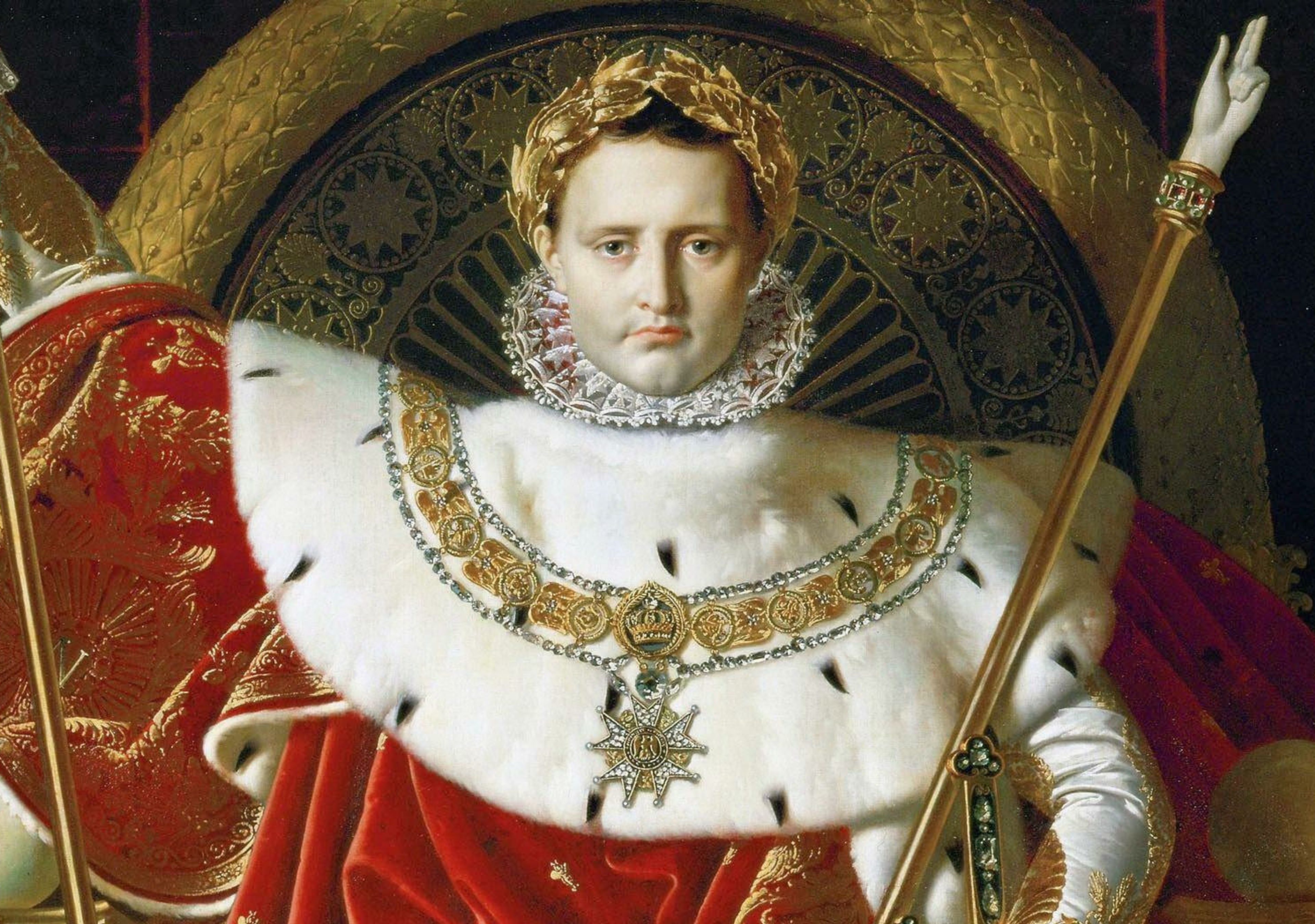Throughout history, rulers have gifted rings as a sign of their royal favor. Recipients wore them both as sign of their allegiance to and as tokens of their familial distinction. The tradition dates as far back as in Ancient Rome, where those who wore rings with the image of Emperor Claudius were given immediate access to his Imperial presence. And much later in Roman history (308 A.D.) when Emperor Constantine came close to losing the faithfulness of his army, he made sure to frequently gift them loyalty rings. After all, are you going to stab an Emperor in the back (a literal fear), if you're wearing a gold ring with the Emperor's name and your loyalty oath on it?
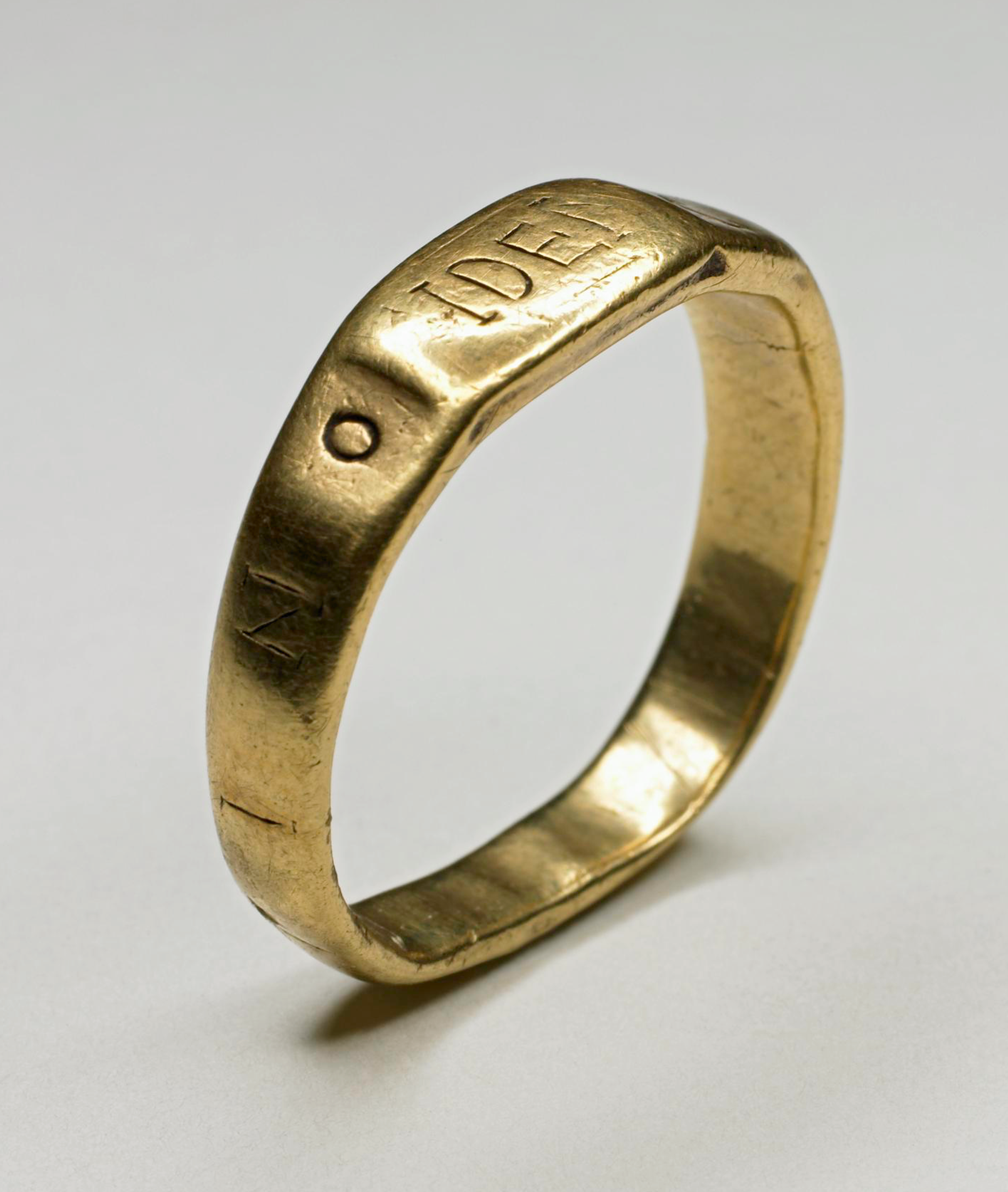
Gold ring inscribed (F)IDE(M) CONSTANINO, meaning "I pedge my faith to Constantine."...
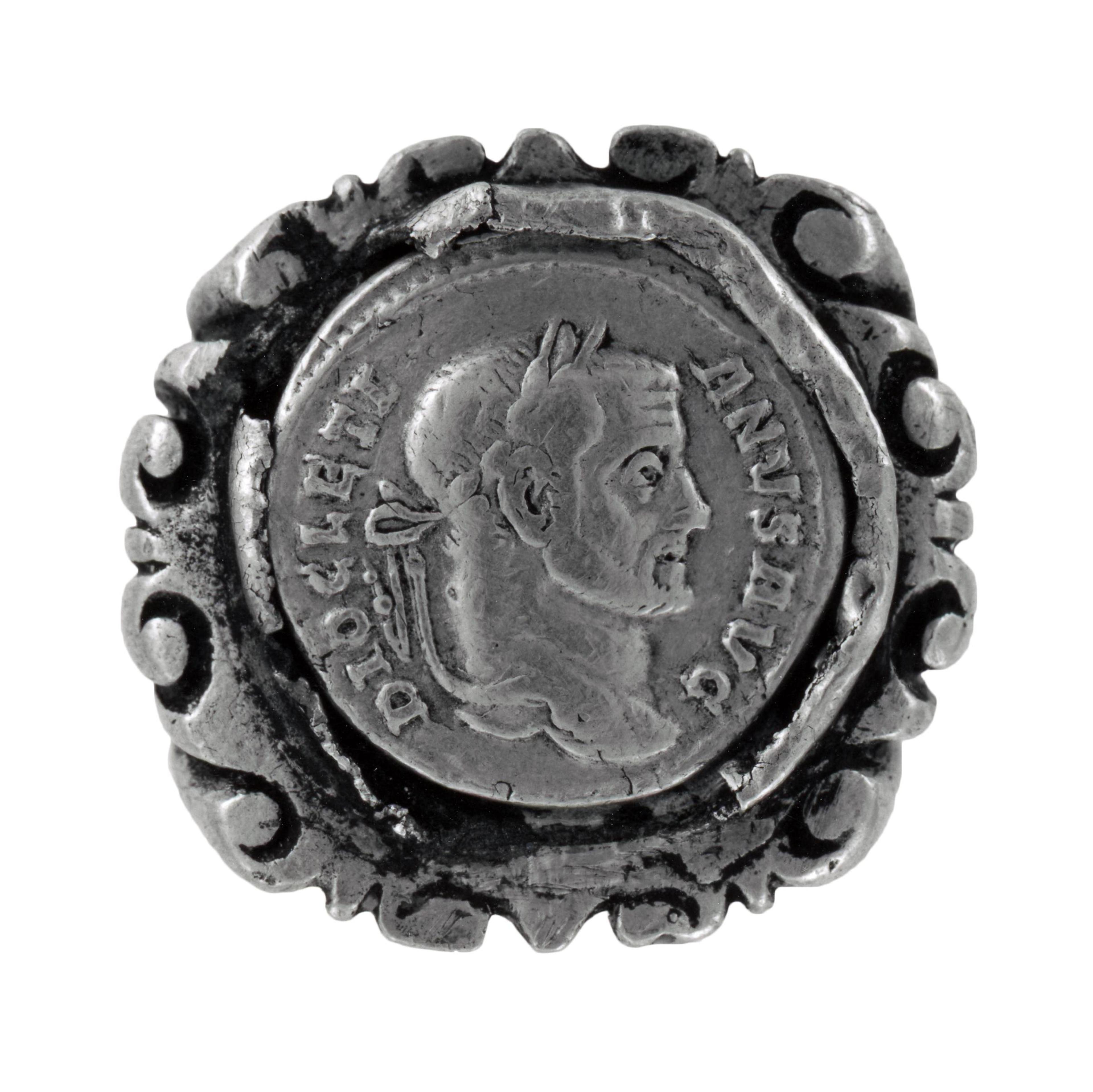
Ring with the image of Emperor Diocletian (r. 284-305). The reverse shows...
The tradition never died out. As long as there were monarchs, they seem to have gifted rings. For example, Henry VIII and his daughter Queen Elizabeth I of England gifted rings with their portraits to their favorites.

This is one of around 30 cameo portraits made between 1507-1603 and...
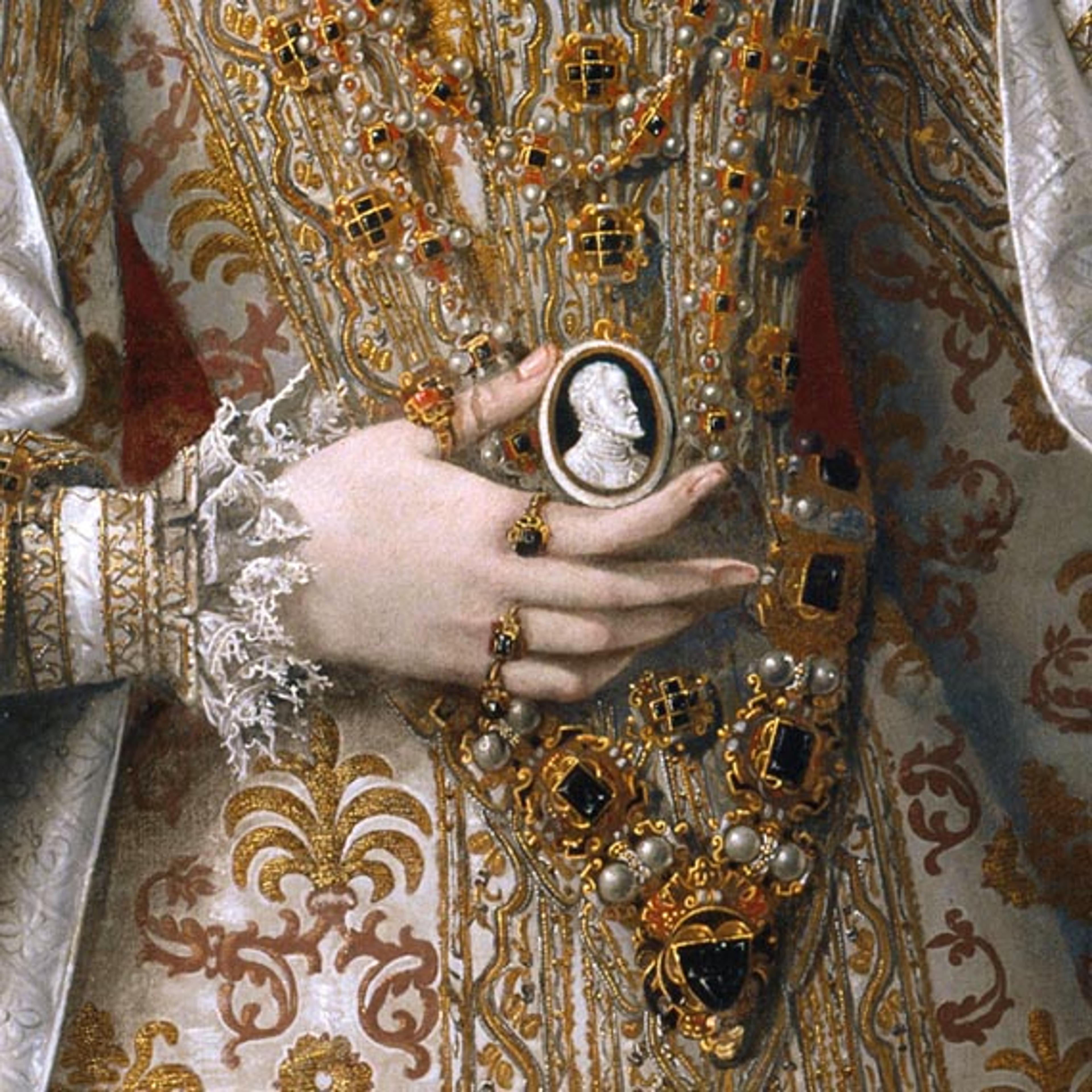
In this portrait detail Infanta Isabella Clara Eugenia is holding a cameo...
In 17th century England, Queen Henrietta used rings with the portrait of Charles I to finance the Royalist cause prior to the English Civil War. Almost immediately after the execution of Charles I, rings were worn by those who hoped for a Stuart restoration.
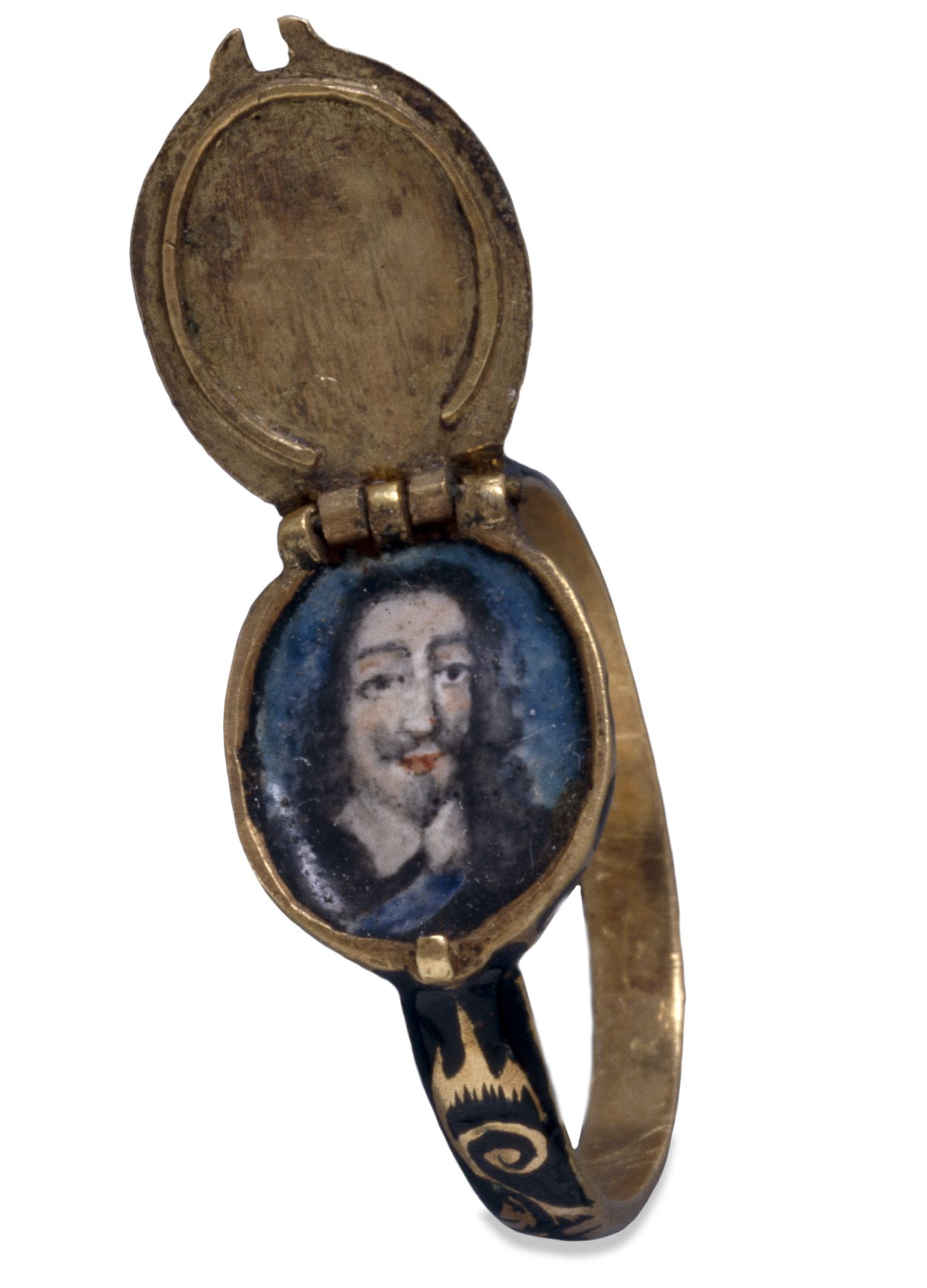
Charles I was executed in 1649 for treason against England. In the...
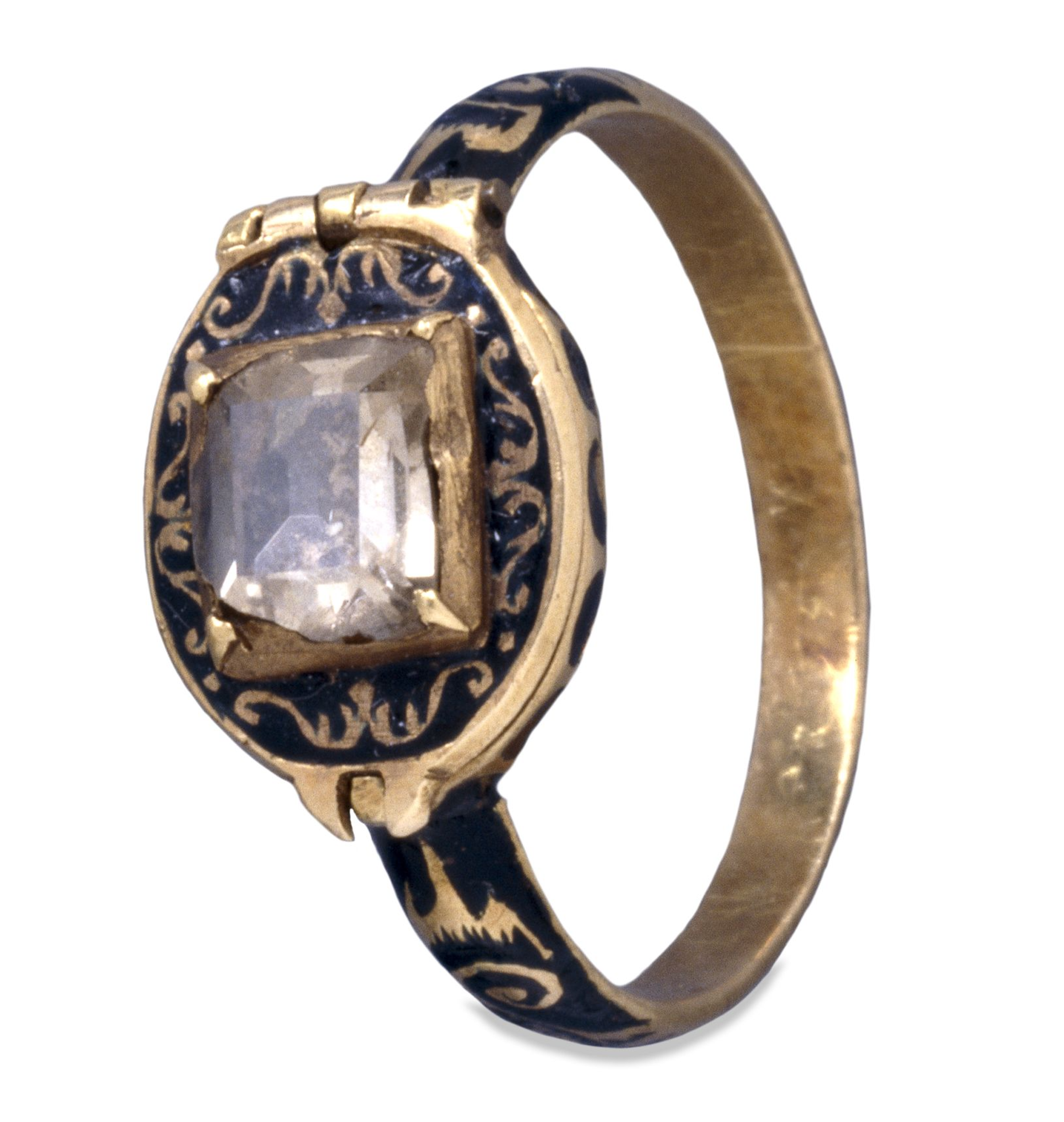
The black enamel is a sign that the ring could be worn...
Rings highlighting the dynastic importance of royal marriages were often gifted to those present at the ceremony. When Marie Antoinette wed the future Louis XVI, rings with miniatures of the couple were given to all the bridesmaids. Every marriage, birth or coronation was cause for new rings to be handed out.

Marie Antoinette and Her Children, 1787 by Élisabeth Vigée Le Brun. Versailles.
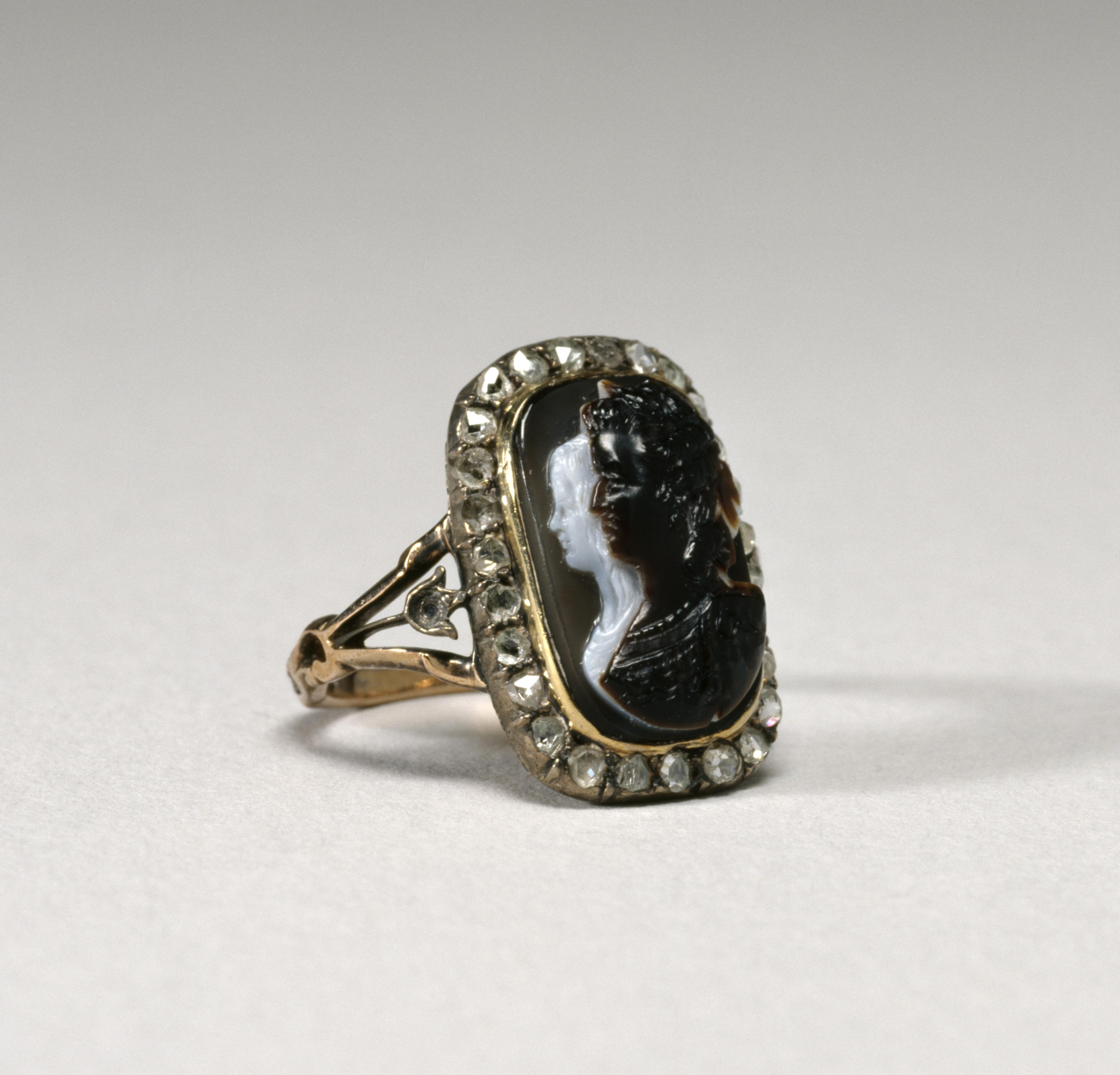
Cameo ring depicting Marie Antoinette and her son, the Dauphin. It may...
By the time of the politically charged 18th century, these rings morphed from merely signs of favor or support into the political bumper sticker of their day.
In France, you could show your support of the French Revolution by purchasing jewelry set with polished stones from the Bastille.
Those on the less popular Royalist side were more secretive. Think jewelry with hidden portraits of the royal family, or better yet: reliquaries with their hair.
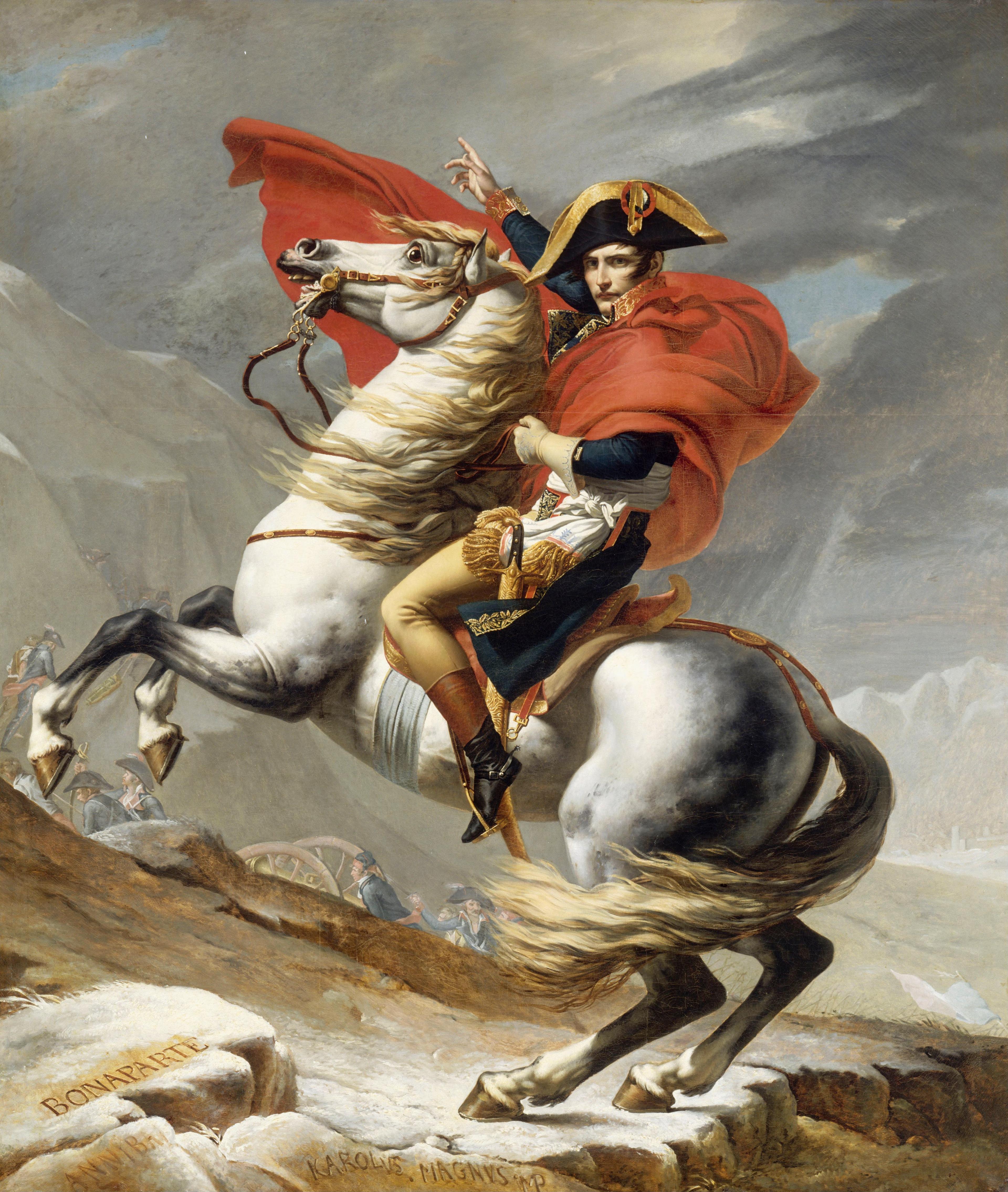
Napoleon ordered four versions of this painting that depicted his 1800 crossing...
No one was better at harnessing the power of jewelry as propaganda than Napoleon.
By the time he was 28 years old, Napoleon was already a French national hero. He had just defeated the Austrian Empire and brokered a deal which gave France a chunk of Italian territories. Even though his next venture -- an expedition to Egypt -- was a militaristic failure (but huge artistic success), he managed to use it as a springboard to political power. And in November 1799, he organized a successful coup and became First Consul of the Republic.
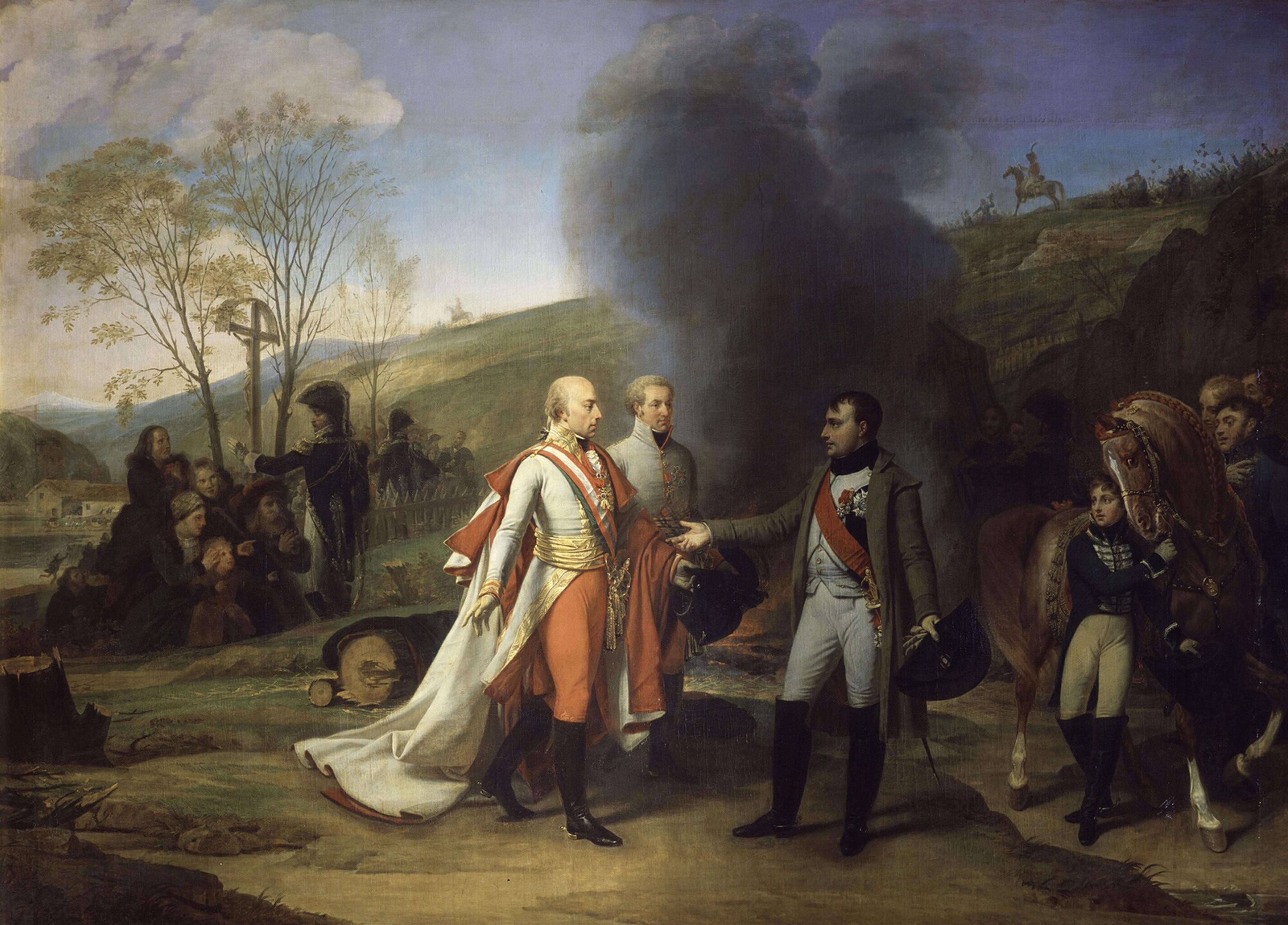
Meeting between Napoleon and the Austrian Emperor on December 4, 1805 by...
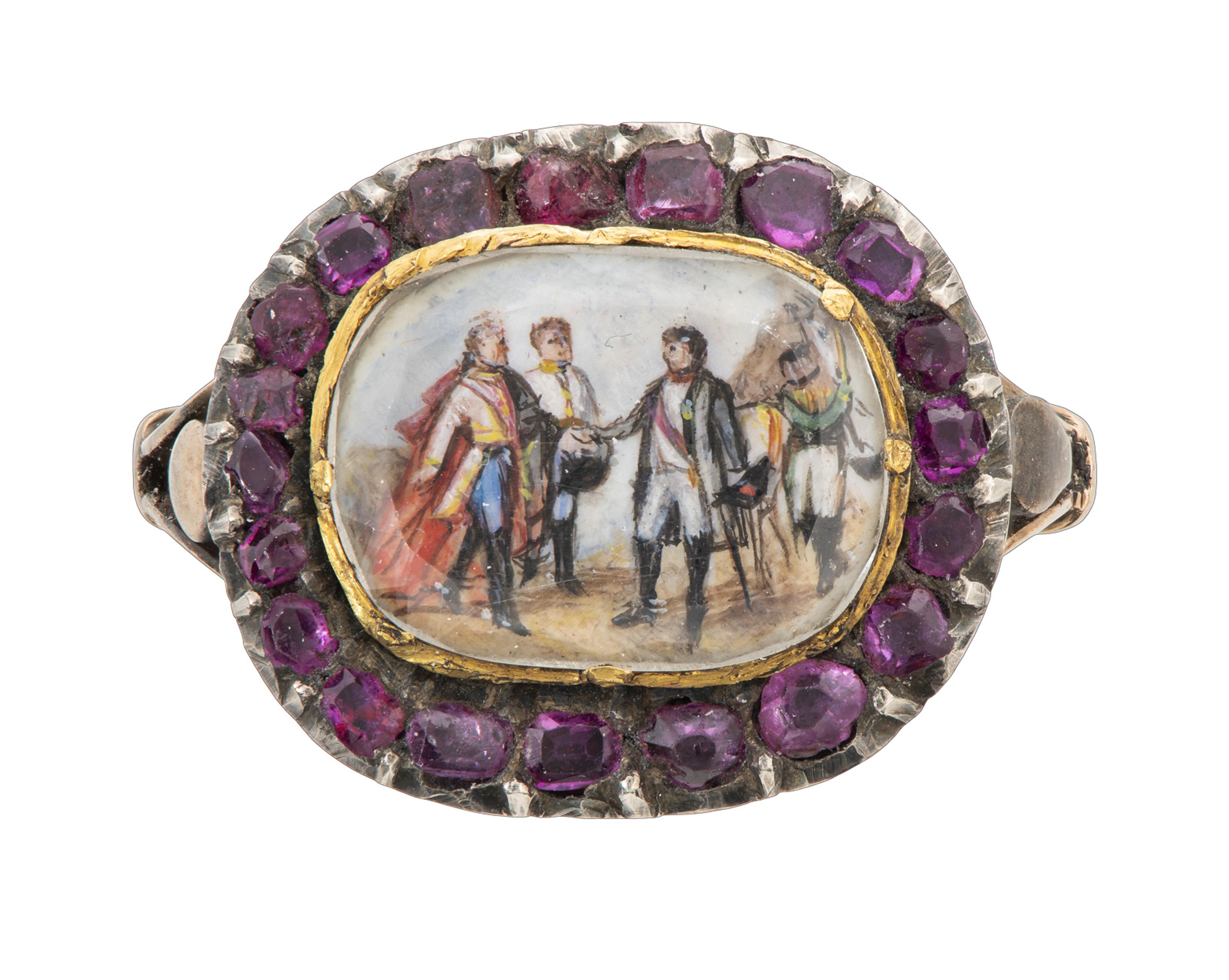
Ring with watercolor after painting by Antoine-Jean Gros. Swiss National Museum, Alice...
Once he was consul, it really was only a short (four-year-long) leap to Emperor. During that time, he held off the British and Russian forces and sold Louisiana to the United States. He also wrote a new civil code which is still in force, with amendments, today. For classically educated French young men (and a war-weary general public), a hereditary Emperor in the style of Ancient Rome felt more stable than a lifetime consul.
So when in 1804 Napoleon manipulated the threat of assassination plots against him to create an imperial system, France approved. He held a referendum to approve his change of status from consul to Emperor in November 1804, and held his coronation in December. Definitely not a procrastinator.

This massive 20 foot tall painting was part of the Napoleon propaganda...
Since France had abolished the "divine right of kings" via the guillotine, Napoleon looked to the Romans, where the power of the emperor was not a dynastic birthright but won on the battlefield. Just like the greatest Roman military leaders, Napoleon was ever mindful of the importance of pomp and circumstance. He frequently gifted rings bearing his cipher or his emblems of the star and bee. When the Empire collapsed in 1815, rings with his image -- either his portrait or carved -- became a popular way of showing support. There was an even greater demand for rings connected with the Emperor after his death in 1841.
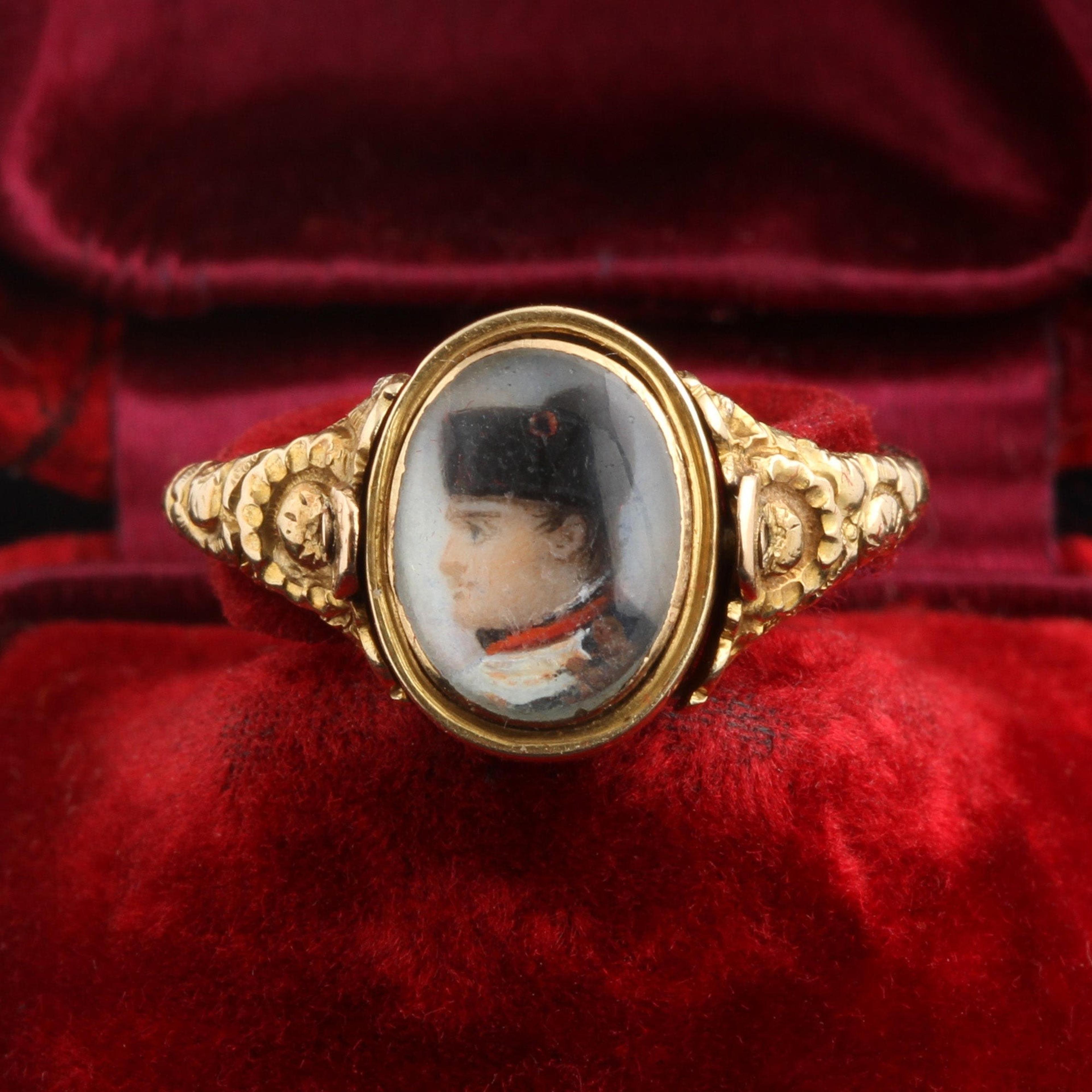
Napoleon Loyalist swivel ring with portrait, 1820.

Reverse: carnelian with a forget-me-not flower and the phrase "Ne M'Oubliez Pas".
The portrait painted on the ring above depicts Napoleon wearing the uniform of the Chasseurs à Cheval. The Chasseurs were a cavalry regiment known for its illustrious combat history (and lavish uniform). On his head is the symbol of his rank: the bicorne, an 18th century hat worn by generals and officers of European and American army and naval officers.
By 1820, the date of our ring (above), Napoleon had been banished to Elba, reinstated for 100 days until he lost at the Battle of Waterloo and then sent to St. Helena, an island under British control. Louis Phillippe I was on the throne. Unlike Napoleon, he was noble born and related to King Louis XVI, but his family had supported the French Revolution.
France had to give up many of the gains made during Napoleon's reign, and many Bonapartists longed for Napoleon's glory days. This type of tribute ring was constructed to allow the wearer to keep their loyalty secret - a necessity in a climate where showing loyalty to the "wrong" party could get you killed. (Three hundred Napoleon supporters were killed in 1815.)
Usually the sweeter word "souvenir" adorns French forget-me-not rings, but this is no ordinary forget-me-not ring. "Ne M'Oubliez Pas" is more of an aggressive direct command, meaning DO NOT FORGET ME. Napoleon commands it!
You have to get pretty close to see the text, so most people would not notice the political theme. The portrait of Napoleon would be worn hidden, against the skin, ready to be flipped around and worn outwards when the wearer was safely in the company of other Loyalists.
On May 5, 1821, Napoleon died in exile on St. Helena, and after that there was an increased appetite for all types of Napoleonic memorabilia. Many in France felt a sense of a deep personal loss. Even in England - long France's military rival -- newspapers were filled with admiring accounts. People were desperate to possess anything that might be associated with him.
